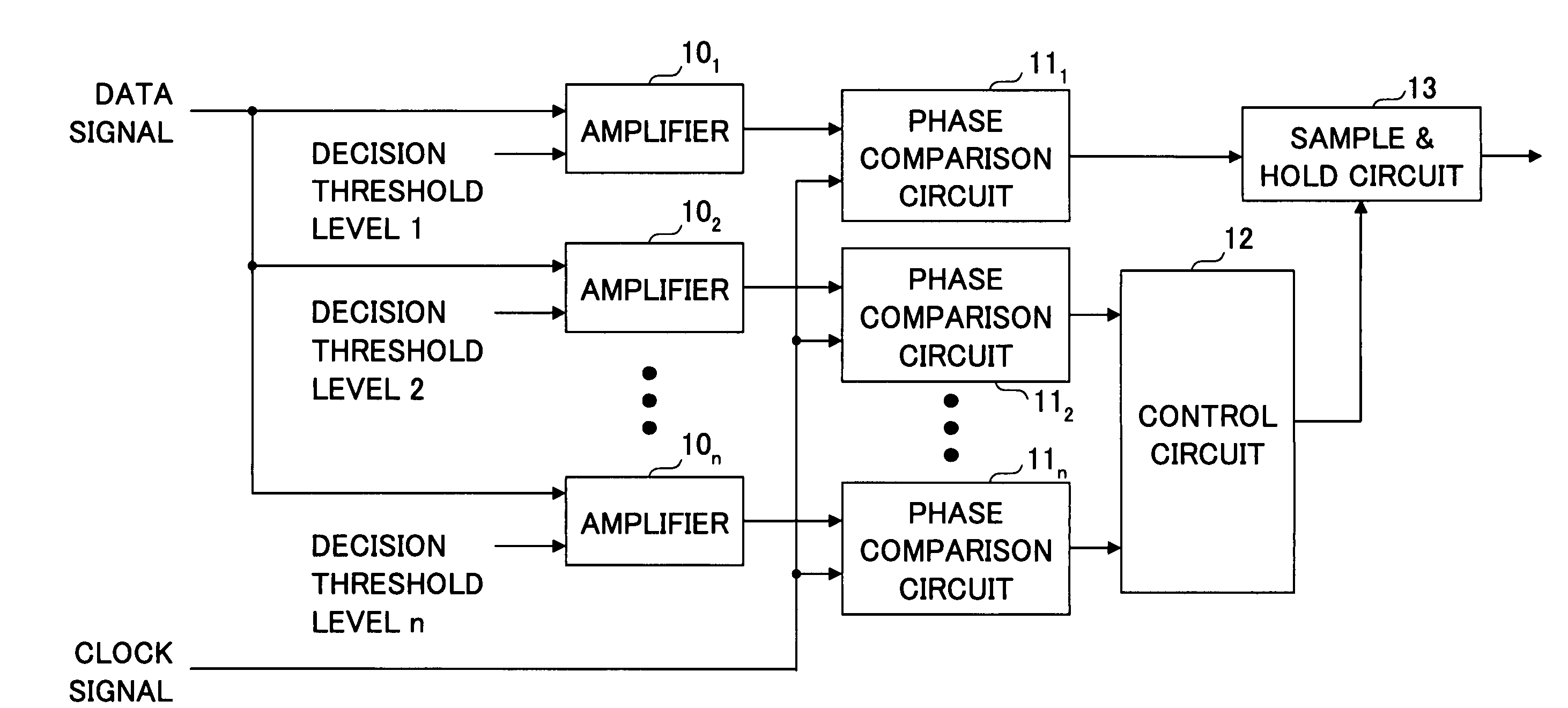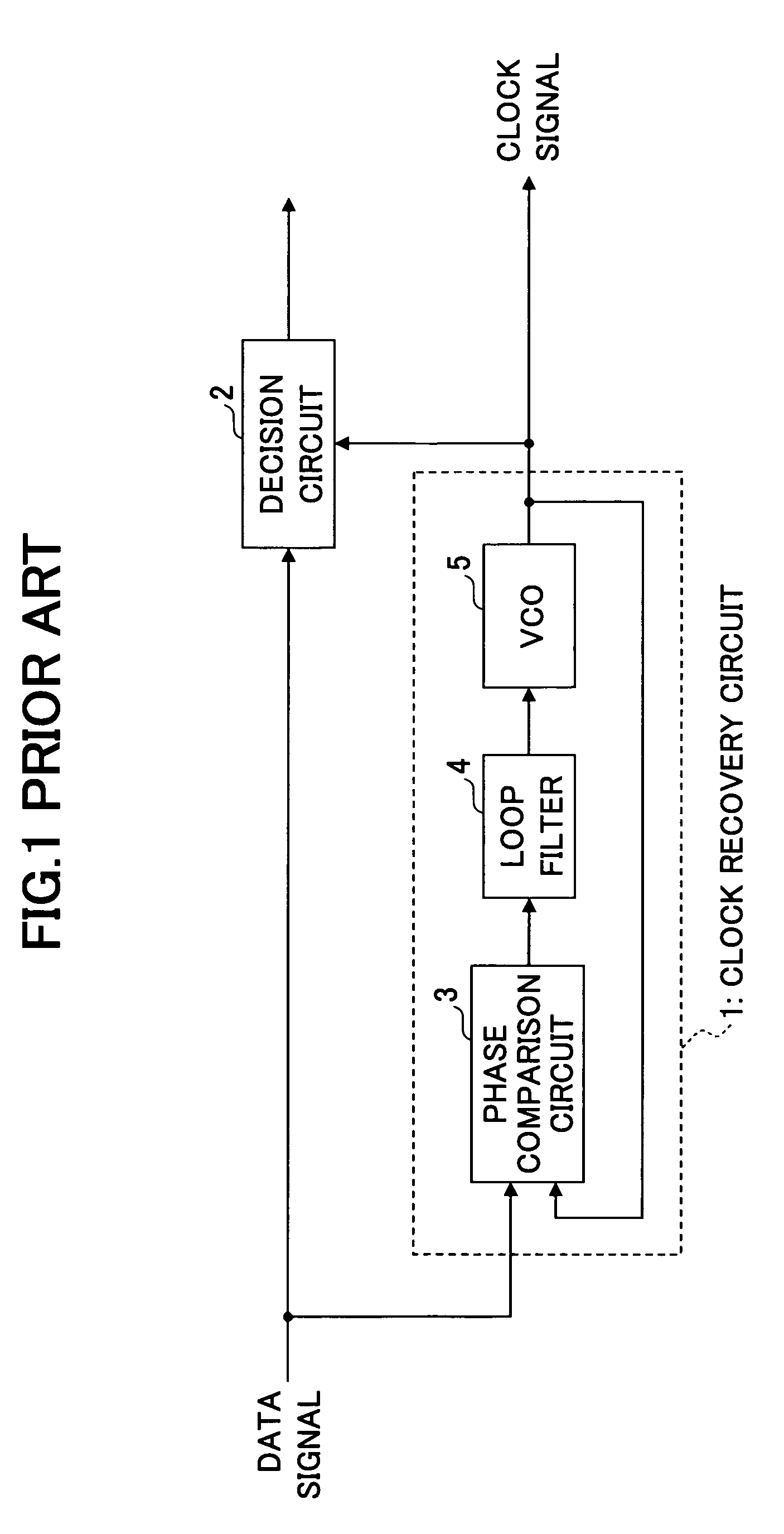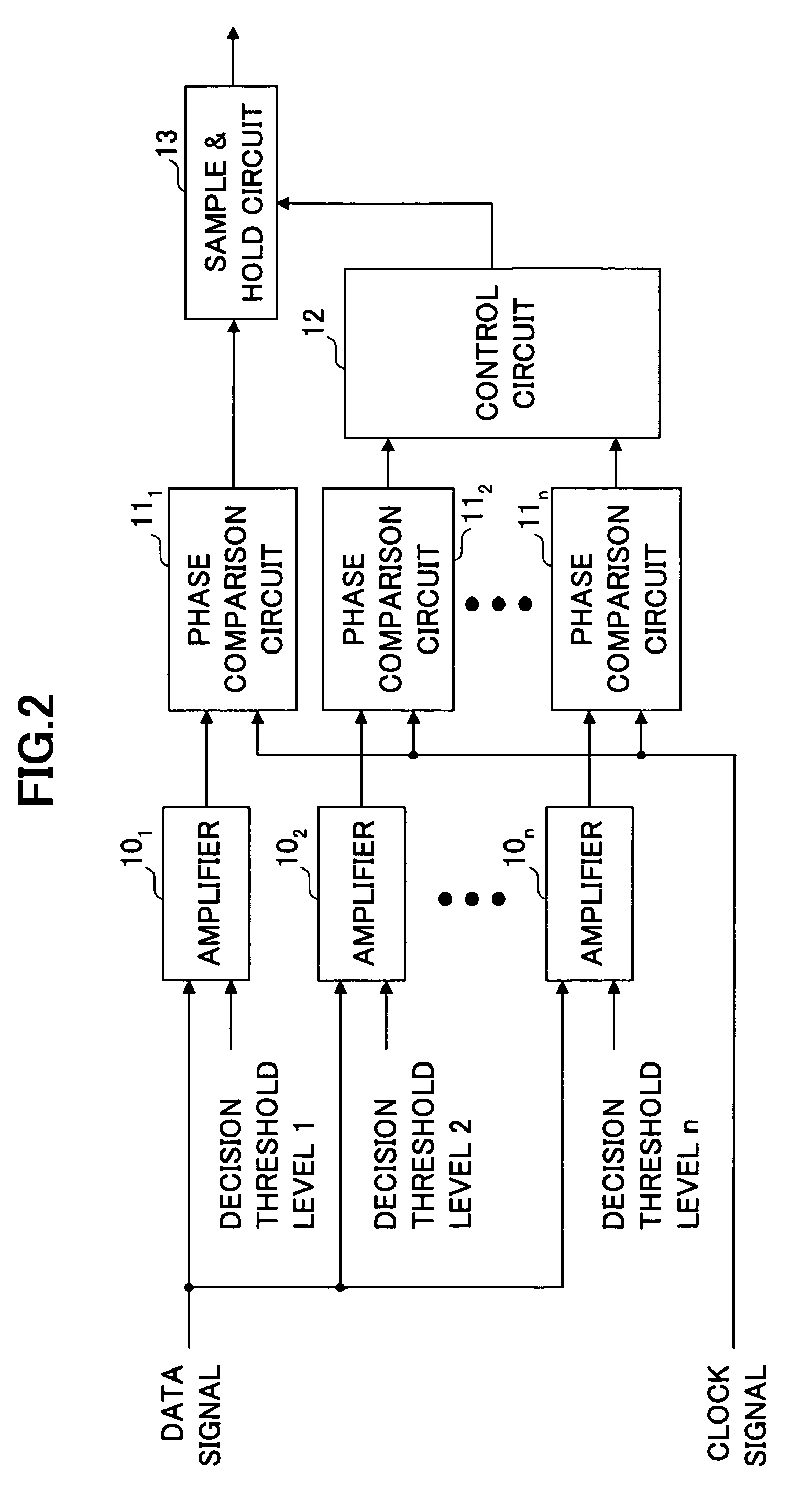Phase comparison circuit and clock recovery circuit
a phase comparison and clock recovery technology, applied in the direction of dc level restoring means or bias distortion correction, transmission monitoring, instruments, etc., can solve the problems of identifying bit errors, detecting error free transmission, and bit errors
- Summary
- Abstract
- Description
- Claims
- Application Information
AI Technical Summary
Benefits of technology
Problems solved by technology
Method used
Image
Examples
first embodiment
[0052] A first embodiment based on the above-mentioned principle is described. FIG. 6 shows a configuration of a phase comparison circuit in the first embodiment.
[0053] The phase comparison circuit in the first embodiment includes amplifiers 201˜203, phase comparison circuits 211˜213 each for comparing phases of a signal from a corresponding amplifier and the clock signal, a circuit 22 for calculating a difference between a phase difference φ2 from the phase comparison circuit 211 and a phase difference φ3 from the phase comparison circuit 213, a comparator 23 for comparing a reference value Δφ min with an output value from the circuit 22, and a sample-and-hold circuit 24 for holding and outputting a signal from the phase comparison circuit 211. The circuit 22 and the comparator 23 correspond to the control circuit 12.
[0054] As shown in the figure, a decision threshold level Vth is supplied to the amplifier 201, a decision threshold level Vth+dV is supplied to the amplifier 202, a...
second embodiment
[0055] Next, a second embodiment is described. FIG. 7 shows a configuration of a phase comparison circuit in the second embodiment.
[0056] The phase comparison circuit in the second embodiment includes amplifiers 301˜302, phase comparison circuits 311˜312 each for comparing phases of a signal from an amplifier and the clock signal, a circuit 32 for calculating a difference between a phase difference φ1 from the phase comparison circuit 31, and a phase difference φ2 from the phase comparison circuit 312, a comparator 33 for comparing a reference value Δφ min with an output value from the circuit 32, and a sample-and-hold circuit 34 for holding and outputting a signal from the phase comparison circuit 311. The circuit 32 and the comparator 33 correspond to the control circuit 12 of FIG. 2.
[0057] As shown in the figure, a decision threshold level Vth is supplied to the amplifier 301, and a decision threshold level Vth+dV is supplied to the amplifier 302. Each phase comparison circuit ...
third embodiment
[0059] Next, a third embodiment is described. FIG. 8 shows a configuration of a phase comparison circuit in the third embodiment.
[0060] The phase comparison circuit in the third embodiment includes amplifiers 401˜402, an oscillator 42 for periodically changing a decision threshold level of the amplifier 402, an adder 43 for adding a signal of the oscillator 42 and a signal indicating the decision threshold level, phase comparison circuits 441˜442 each for comparing phases of a signal from an amplifier and the clock signal, a circuit 45 for calculating a difference between a maximum value and a minimum value of an output φ2 from the phase comparison circuit 442, a comparator 46 for comparing a reference value Δφ min with an output value from the circuit 45, and a sample-and-hold circuit 47 for holding and outputting a signal from the phase comparison circuit 441. The circuit 45 and the comparator 46 correspond to the control circuit 12 of FIG. 2.
[0061] As shown in the figure, a dec...
PUM
 Login to View More
Login to View More Abstract
Description
Claims
Application Information
 Login to View More
Login to View More - R&D
- Intellectual Property
- Life Sciences
- Materials
- Tech Scout
- Unparalleled Data Quality
- Higher Quality Content
- 60% Fewer Hallucinations
Browse by: Latest US Patents, China's latest patents, Technical Efficacy Thesaurus, Application Domain, Technology Topic, Popular Technical Reports.
© 2025 PatSnap. All rights reserved.Legal|Privacy policy|Modern Slavery Act Transparency Statement|Sitemap|About US| Contact US: help@patsnap.com



